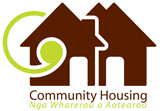Report cards: progress towards sustainability
News release
27 November
2007
Annual report cards reveal
progress towards sustainability
Report
cards released today by Greater Wellington show a region in
reasonable environmental health but still grappling with the
pressures of urban and agricultural development.
The cards cover the health of rivers, streams and coastlines, air quality, recreational water quality, rainfall and river flows, groundwater, soil, natural hazards and pollution control. They tell the story of what happened last year, and actions the Council is taking to manage the region’s resources more sustainably.
Among the issues highlighted is the continuing impact of urban and agricultural land use on river and stream health, particularly urban and most lowland rural streams.
Demand to fill in, pipe or realign small streams to make way for urban development has been growing over the last decade. Increased sediment runoff from urban areas is also finding its way into more streams and coastal waters, in particular Porirua Harbour.
Water supply pressures are also growing in some areas after the second driest autumn on record. The dry summer and autumn resulted in pressure on groundwater resources as irrigation demands increased.
Greater Wellington Regional Sustainability Committee chairperson Cr Chris Laidlaw said the report cards enabled the council to assess its progress towards environmental goals and share information about natural resources with the wider community.
“It’s very important for us to share our technical information about the state of the environment with everyone in the community. Recreational swimmers and fishermen need to know the state of our coast and rivers, while farmers need to know the condition of their soils and the availability and quality of water for irrigation.
“There are important links between our environmental monitoring and our work assisting schools, businesses and community groups to look after their local areas.
“Through our Take Care programme we are supporting 22 care groups to improve streamside and wetland environments throughout the region. Through Take Action we are working with 35 schools to help children both explore the causes of pollution in their local waterways and then take action with solutions.
“This work helps to mobilise the community to work together and often has considerable social as well as environmental benefits. It is a significant element in the long march toward genuine sustainability.”
ENDS
A summary of
findings is provided on the next page and a .pdf of the report cards is attached.
More detailed monitoring reports are available at
www.gw.govt.nz.
--
Report
snapshot
Recreational water
quality
Forty six of the 76 beaches
monitored had water quality that was suitable for swimming
on all sampling occasions. River water quality was suitable
for swimming on all sampling occasions at four of the 20
sampling sites, with rivers most likely to be unsuitable for
swimming after rain.
River & stream
health
26 of 56 river and stream sites
monitored over 2006/07 had excellent or good water quality.
Water quality is poorest in urban streams and in the lower
reaches of rivers and streams draining agricultural
catchments. Work has started on an urban stream management
strategy and workshops have been held promoting the values
of small streams.
Rainfall & river
flows
Although rainfalls of over 300mm in
the Wairarapa in July 2006 resulted in very high river flows
and some flooding, the remainder of the year was very dry,
with the second driest autumn on record. The Wairarapa
plains and eastern Wairarapa hills were the hardest hit by
the autumn droughts with soil moisture levels well below
average.
Natural Hazards
The rainy
2006 winter triggered landslides that damaged and destroyed
houses in Lower Hutt, Eastbourne and Oriental Parade while
two severe rain storms in July last year flooded farms and
roads in the Wairarapa.
Groundwater
levels
The dry summer and autumn resulted
in pressure on groundwater resources as irrigation demands
increased. Groundwater quality is generally very good, but
monitoring in 71 bores revealed high nitrate levels in four
bores while bacteria were detected in nine.
Soil
health and contamination
Most of the soil
sites tested had at least one soil quality indicator outside
the target range for their land use, with many soils showing
compaction and high levels of nutrients. Most problems could
be rectified through appropriate management.
Air
quality
The region had low air pollution
levels last winter, with particulate matter (PM10) the only
pollutant to exceed the national environmental standards for
air quality, and that was on only one
occasion.
Pollution
control
Environmental incidents were down
20% from last year, with odour showing the biggest decrease.
Enforcement actions were up 21%.
Harbours, estuaries
and beaches
A survey of Wellington
harbour’s sea floor revealed more than 100 animal species,
mostly native crustaceans, molluscs and worms. We are
currently analysing the results of a survey of the
harbour’s sediment
quality.


 Gordon Campbell: On ACT’s Charter Schools Experiment
Gordon Campbell: On ACT’s Charter Schools Experiment Unions Wellington: Poll Shows Three Quarters Of Wellingtonians Oppose Airport Sale
Unions Wellington: Poll Shows Three Quarters Of Wellingtonians Oppose Airport Sale NZ Government: Christopher Luxon - Pre-Budget Speech To Auckland Business Chamber
NZ Government: Christopher Luxon - Pre-Budget Speech To Auckland Business Chamber Government: New Zealand Supports UN Palestine Resolution
Government: New Zealand Supports UN Palestine Resolution Green Party: Greens Welcome Cross-party Approach To Climate Adaptation
Green Party: Greens Welcome Cross-party Approach To Climate Adaptation Government: Climate Change – Mitigating The Risks And Costs
Government: Climate Change – Mitigating The Risks And Costs Greenpeace: Protest March Against Fast-track Bill Announced For Auckland
Greenpeace: Protest March Against Fast-track Bill Announced For Auckland


